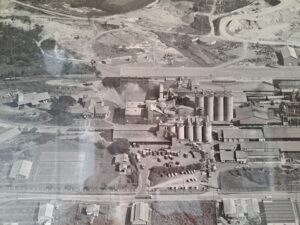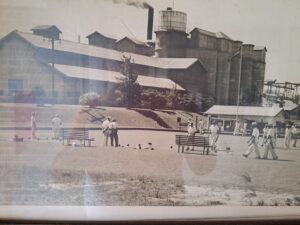History
 The Darra Cementco Bowls Club, or Cementco Bowls Club as it was then known, began in May 1949. the Club was started as a recreational facility within land owned by the Queensland Cement and Lime company predominately for its employees. It remained this way unit 1998 when Cementco ceased production at this location and downsized its workforce.
The Darra Cementco Bowls Club, or Cementco Bowls Club as it was then known, began in May 1949. the Club was started as a recreational facility within land owned by the Queensland Cement and Lime company predominately for its employees. It remained this way unit 1998 when Cementco ceased production at this location and downsized its workforce.
The Queensland Cement and Lime (QCL) based in Darra was established in 1914 to provide Queensland with a local supply of cement. Just after the war alcohol was hard to get so the best way to do it was in kegs and you had to have a club to get the keg so the Bowls Club opened on May 21, 1949 as a social club for the plant’s employees. There would be more than 300 employees at the bowls club on a Friday afternoon and they built the full green (now named the “George Howard & John Rodger Green” after 2 of the founding members) a half green and a three quarter green alongside the clubhouse. In the years following the bowls club thrived producing many talented bowlers, many who would go on to higher representative honours, and the club winning the very prestigious First Division Metropolitan Pennants in 1985.
Dredging and kiln operations at QCL ceased in Darra in 1998 after more than 100 years in the area and QCL looked at options for the site. The first option was to repurpose the land that the bowls club was situated on however the bowlers of Darra Cementco channeled the spirit of Darryl Kerrigan in their fight against QCL. In one of Australia’s most iconic movies “The Castle”, a battler takes on the mighty Airport Company when it tries to buy his house and knock it down. QCL at Darra had a similar fight on their hands in 2000 when it thought the bowlers next door might be persuaded to go quietly.
A meeting of members was held and it was proposed that the Bowls Club purchase the land being used and, after much negotiation, an agreement was reached. To be fair, the win for the bowlers came at considerable cost for QCL But after the workforce contracted and they wanted the land back the community was having none of it. “We have a lot to thank one of our members for, said Allan Rigney, the President of the club at the time the fight kicked off. Arthur was a retired barrister and a bit like the character in The Castle, he knew all the legal stuff and he helped to negotiate a deal for us. So the club negotiated a bank loan and for the next 15 years began making monthly payments to QCL. The club had to scrape up $4000 per month, every month to buy the land from QCL. Rigney said that it was a tough deal for a small club and every month wondered if this would be the month we’d lose the lot. But here we are – we own this land and the clubhouse outright. It was a proud day and a great reward for all of the years of hard work by all of the members.
Now the bowlers not only have the keys to the door but the title deed to the land they’ve been bowling on since 1949. The vibe at the club was electric at the title deed handover cere mony and there is no doubt that precious piece of paper will go “straight to the pool room”.
mony and there is no doubt that precious piece of paper will go “straight to the pool room”.
Bill Woods, the Darra Cementco President at the time of the final payment in 2016, was pleased as punch to show off the title deed proving the club had done it – paid off the debt in the nick of time to achieve their goal. The Club’s Solicitor Anthony Torbey, the son of club stalwart and Patron Shafik Torbey, was also there to see the dream come true. At the time of the purchase from QCL the land which is located within a stones throw of Darra Station was estimated to be worth in the vicinity of $3 million.
When the lease was signed the club had 60 active men and 20 ladies playing but has since grown and become a thriving family and community centre with over 130 active members, including junior bowlers.
QCL merged to become Cement Australia in 2003 and commissioned Greystone to redevelop the old cement work site in 2011. At that time Greystone and
QCL did a deal with the club to reconfigure the land, taking out the half and three quarter greens and a car park for a new business and technology precinct and, in exchange, building the club a new $1 million grass green alongside the existing green as well as new car parking. This green was named the “Zanchetta Green” in honour of the club’s high achieving Queensland representatives John And Mario Zanchetta.
